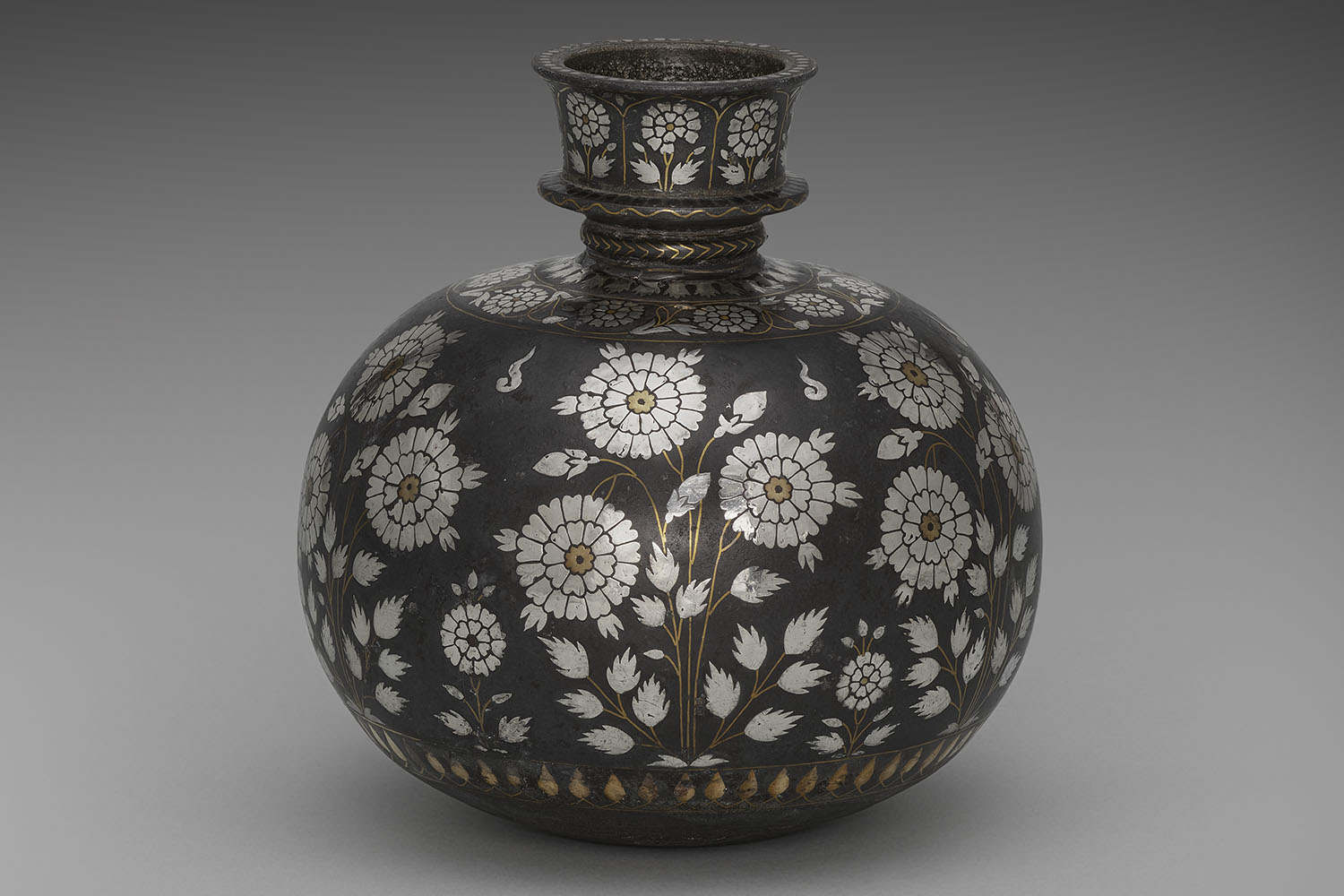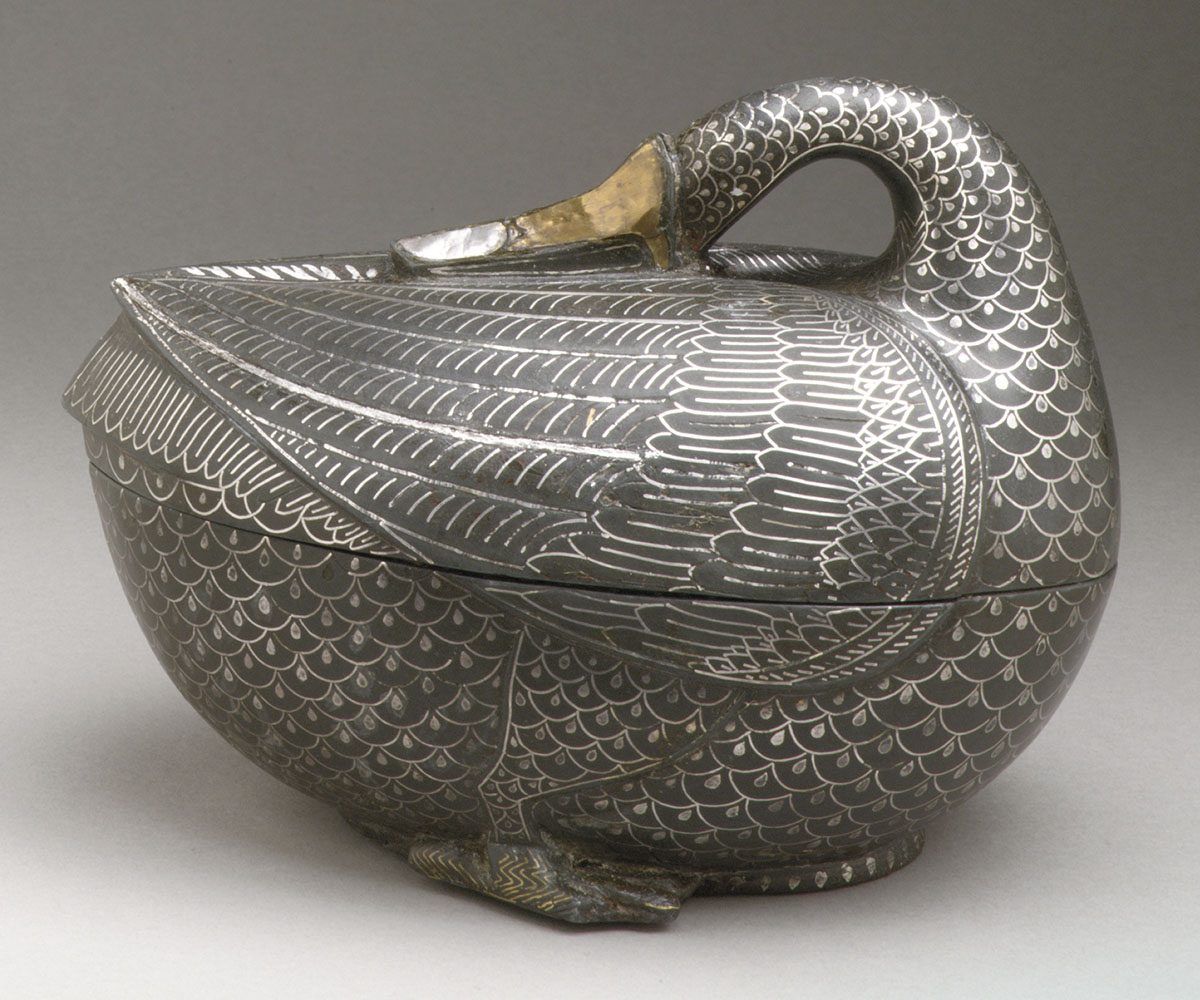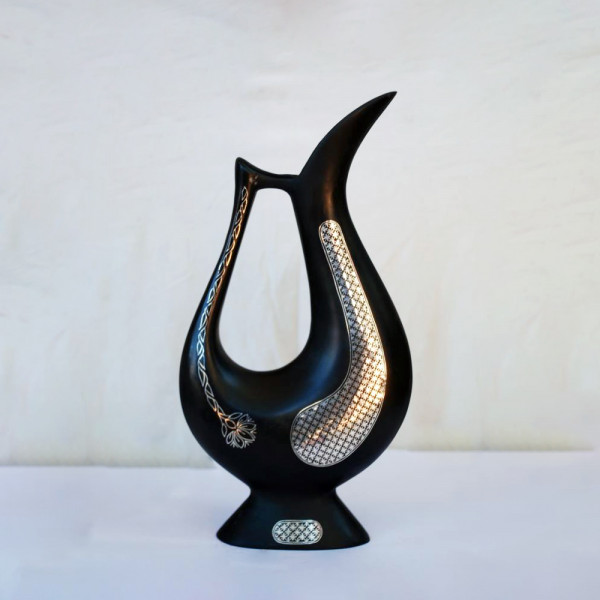
Bidri work is a beautiful piece of metal craft which is known for the contrast of black alloy and silver inlay. Named after the town of Bidar of Karnataka, this artform reflects on the blend of Persian aesthetics and Deccan craftmanship. Bidriware is known for its bold and detailed pattern and is seen on decorative items such as vase, bowls, trays and even jewellery boxes. The hallmark of Bidri work is not just in its visual beauty but the technique that makes silver or brass motifs shimmer on a matte black background, which is achieved by oxidizing process. Over the centuries the craft has evolved accommodating modern taste while retaining the traditional essence. It has also become a symbol of artistic nature which is featured in museums and even as gift offerings.
Origin

Bidri work is said to have its root to 14th century during the rule of Bahmani Sultans in the Deccan region of India. The craft is believed to have been introduced by the Persian artists who came to India during the reign of Ahmed Shah Bahmani. The artists brought with them the technique of inlaying silver and brass on metal surfaces, which was inspired of Persian metalwork which was then adapted to local materials and artistic conditions.
The city of Bidar became the central point to this craft due the availability of rich black soil rich in alkali content, which is important role in oxidising process. The Bahmani rulers who had deep appreciation for art and culture, which helped in supporting and promoting the craft by offering patronage and workshops to the artisans. The artisan community merged the Persian technique with native traditions. What this set apart is the material alloy of zinc and copper which is treated with ammonium chloride and soil, which turns jet black. By 17th century this craft reached Hyderabad, Aurangabad and even the Mughal empire. It became a symbol of artistic and cultural sophistication.
Evolution of the craft
This craft flourished from 16th to 18th century under the patronage of various Deccan Sultanates and Nizams of Hyderabad. The Bidriware artists were commissioned to make surahi, hookah, beetel boxes and decorative plaques. The craft also spread to different cities like Aurangabad, Hyderabad and Lucknow with each region adding own stylistic features to the technique. The main factor for the craft to flourish was the royal patronage.

During the colonial period, Bidriware was also favoured by British officials and traders. Many pieces were commissioned as gifts and souvenirs. In the 20th century there was a resurgence of the indigenous craft with the heritage preservation efforts. The Indian Handicraft Board, NGO’s played an important role in reviving through workshops and exhibitions. Bidriware also enjoys Geographical Indication status in 2006 for the artists to keep the tradition alive. Contemporary artists have experimenting with new materials and forms such as with glass and ceramics.
The Making

This process combines artistic detailing and technical precision. Bidriware begins with preparing base alloy, a mix of copper and zinc. This mixture is further poured into different clay mould. Once it has cooled down it is polished and the surface is then engraved with intricate designs using chisels. After the inlay work, pure silver wires or sheets are them hammered into the grooves which is then smoothened to ensure it is on the same level as the metal. The most distinctive step of making is the process of oxidization. The metal piece is dipped into a solution made from ammonium chloride and special black soil found in the area of Bidar. The soil reacts to the alloy which turns into a deep black shade with silver retaining its brightness. The piece is buffed and polished for the last time which brings out the silver shine on the contrasting matte background.

Motifs
The motifs are an interplay between Persian, Mughal and Deccan style. The motifs have meaning and made from precision. Bidriware is still handcrafted by the families which belonged to generation old of artisan community. This process is labour intensive and is supported by various government bodies to keep the craft going
Floral Motifs
Bidriware is known for the delicate floral motifs including lotus and rose patterns. These were inspired by Mughal art and miniature painting traditions, they represent purity and divine beauty. One of the signature motif is ‘ashrafi’ which is named after gold coin in Mughal period. It comprises of circular floral pattern symbolizing grandeur and cultural heritage.

Calligraphy
Certain Bidriware items incorporates Arabic or Persian calligraphy. They were also popular during gifting and festivals. The calligraphy elements a lyrical and spiritual touch to the object.

Animal and Bird Motif
Bidriware also showcased peacocks, parrots and other animals forms in mirror image pairs symbolizing harmony and aesthetic detailing. They were subtle and reflected on the regional adaptations and artistic creations. The birds appeared on smaller objects like jwellery boxes and trays surrounded by geometric frames around.

Contemporary and Abstract Designs

Many artisans are trying to revitalise this artwork by using contemporary elements. This includes of using asymmetrical grid work and dot work. They are also experimenting with materials such as combining Bidri inlay with glass, wood and ceramics.
Crafting for the Modern World
Despite the historical significance it does face challenges to survive. One reason is as it is a labour intensive process with low profits, the artists receive minimal returns. Even with the rising cost of materials especially silver it strains the production of the craft. Limited market access and less number of artists, restricts the craft to grow and affects its visibility in the market.
But even with these issues the craft continues to grow. With it’s GI status and training programs, artists cooperatives and financial schemes to ensure the survival of the craft. Bidriware has also experimented in the form of home décor, fashion accessories and jewellery. This is done to appeal to the urban markets and help the artist to explore new forms and techniques without letting go of the authenticity. We can wish for the people to support the local handicraft and ensure to help sustain the artists in their craft.
Conclusion
Bidri work is an example of Indian tradition which merges the Persian elegance with Deccan craftwork. Originating from Karnataka this metal craft has captivated art lovers for centuries. It has also shown adaptability to evolve and also meet the changing needs of the contemporary world. Digital platforms and exposure can further help bring Bidriware to larger audience. With collective effort and awareness Bidriware can evolve into art form that bridges tradition and modernity in an elegant way.
References
https://ruralhandmade.com/blog/unveiling-the-secrets-of-bidriware-a-rare-and-exquisite
https://indianexpress.com/article/et-al-express-insight/bidri-a-piece-of-heritage-craftsmanship-in-karnataka-8895484/
https://www.directcreate.com/craft/bidri-ware




